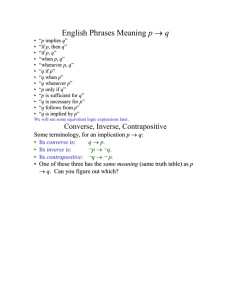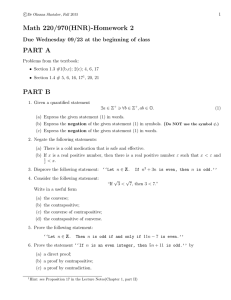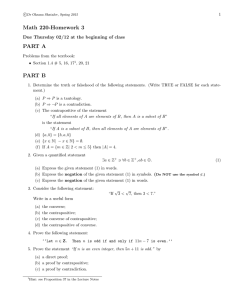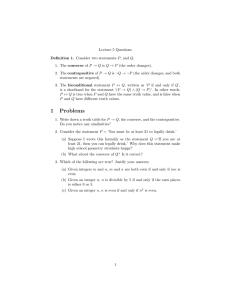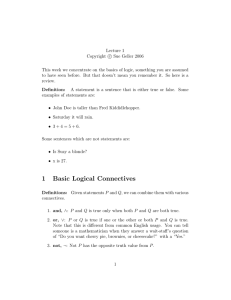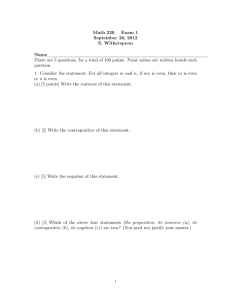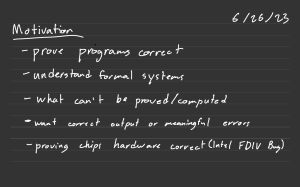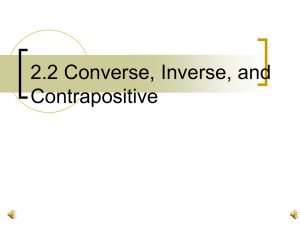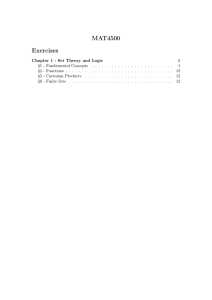A detailed list of topics to review for Math 220... . on February 5 Chapter 1:
advertisement
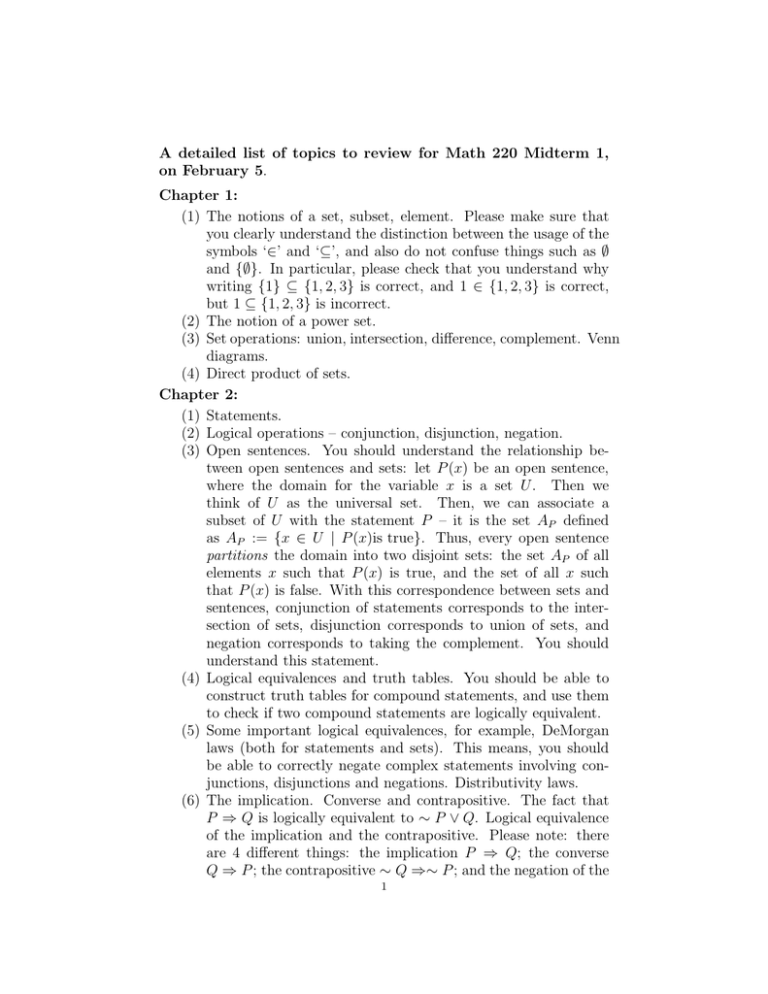
A detailed list of topics to review for Math 220 Midterm 1,
on February 5.
Chapter 1:
(1) The notions of a set, subset, element. Please make sure that
you clearly understand the distinction between the usage of the
symbols ‘∈’ and ‘⊆’, and also do not confuse things such as ∅
and {∅}. In particular, please check that you understand why
writing {1} ⊆ {1, 2, 3} is correct, and 1 ∈ {1, 2, 3} is correct,
but 1 ⊆ {1, 2, 3} is incorrect.
(2) The notion of a power set.
(3) Set operations: union, intersection, difference, complement. Venn
diagrams.
(4) Direct product of sets.
Chapter 2:
(1) Statements.
(2) Logical operations – conjunction, disjunction, negation.
(3) Open sentences. You should understand the relationship between open sentences and sets: let P (x) be an open sentence,
where the domain for the variable x is a set U. Then we
think of U as the universal set. Then, we can associate a
subset of U with the statement P – it is the set AP defined
as AP := {x ∈ U | P (x)is true}. Thus, every open sentence
partitions the domain into two disjoint sets: the set AP of all
elements x such that P (x) is true, and the set of all x such
that P (x) is false. With this correspondence between sets and
sentences, conjunction of statements corresponds to the intersection of sets, disjunction corresponds to union of sets, and
negation corresponds to taking the complement. You should
understand this statement.
(4) Logical equivalences and truth tables. You should be able to
construct truth tables for compound statements, and use them
to check if two compound statements are logically equivalent.
(5) Some important logical equivalences, for example, DeMorgan
laws (both for statements and sets). This means, you should
be able to correctly negate complex statements involving conjunctions, disjunctions and negations. Distributivity laws.
(6) The implication. Converse and contrapositive. The fact that
P ⇒ Q is logically equivalent to ∼ P ∨ Q. Logical equivalence
of the implication and the contrapositive. Please note: there
are 4 different things: the implication P ⇒ Q; the converse
Q ⇒ P ; the contrapositive ∼ Q ⇒∼ P ; and the negation of the
1
2
implication itself, ∼ (P ⇒ Q). Of these, only the implication
and its contrapositive are logically equivalent. Otherwise, none
of these implies the other. In particular, if P ⇒ Q is true, it
does not at all mean that the converse should be true (see if you
can come up with examples). The negation of the implication
∼ (P ⇒ Q) is logically equivalent to ∼ (∼ P ∨ Q) ≡ P ∧ ∼ Q.
In particular, please do not confuse this with the contrapositive
or converse, or the contrapositive to the converse (which is a
very popular mistake – write down the contrapositive to the
converse, and you will see why). You should be able to come
up with verbal examples, such as “if I do not buy a lottery
ticket, I will not win the lottery”. Try making the converse,
contrapositive, and the negation of this statement, and look at
the differences.
(7) The biconditional.
(8) Quantifiers. Unions and intersections (and complements) of
indexed unions of sets. Negation of statements involving quantifiers.
Chapter 3, and 4.4. We will deepen the study of these proof techniques later, but you should be able to prove statements about sets,
and also simple statements related to the integers, using the following
techniques:
(1) Direct proof
(2) Disproving statements by a counterexample.
The statements you will be expected to prove (or disprove) will be
either about relationships between different sets, or about unions or
intersections of indexed collections of sets, or about even/odd integers.
